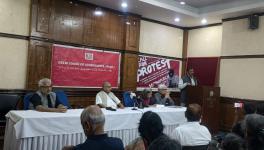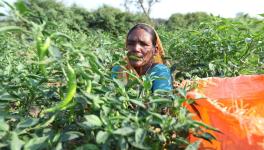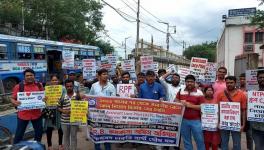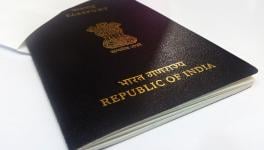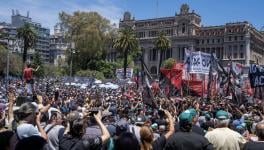Criminalising the Public Sphere
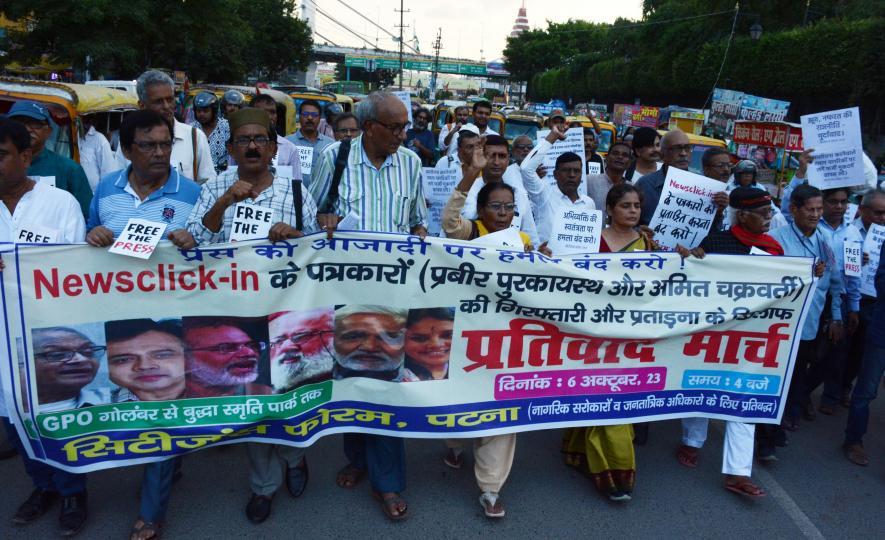
The recent spate of attacks against the media, including the recent raids against NewsClick editor Prabir Purkayastha, is not only about an attack on the independence of media and other democratic institutions; it is essentially about criminalising the public sphere and changing the popular mode of thinking from open and conversational to suspicious and conspiratorial. If it was “merely” an attack on the independence of the media, it could change with the government changing and liberating the media from the clutches of corporate control and, perhaps, bringing in better legislation to ensure its autonomy.
The attack on media and other democratic institutions is attempting to gradually build a great trust deficit in society. Autonomous and independent media signals a civil sphere with a collective based on dialogue and good conversation. Conversation is being replaced by conspiracy and dialogue with criminality. This needs to be debated alongside the freedom of media.
The narratives being spun are geared towards taking control of popular opinions and perceptions. They are geared towards encouraging a culture of rumour-mongering and forcefully justifying injustice as a necessary and only way to live. Much of this spinning began with castigating the Muslims, which found its initial legitimacy and justification in bringing Muslims under control. Such methods never stop with a social constituency but become a general governance paradigm.
The final success of toxic majoritarianism is not only in taking control of institutions but producing “manufactured consent”, which can sustain itself with a cascading effect. The protests supporting independent media should also bring into public debate the attempts at criminalising our thought process.
Criminalisation brings into submission not only the minority but also the majority, with complicity as complete submission. Majoritarianism is not about the interests of the majority but the unaccountable power of a tiny coterie that rules in the name of a majority. The protests against the attacks on media need to speak to this majority and not restrict it within themselves. Protests can no longer speak to the already converted but develop the language and symbolism necessary to talk to the majority. To do this, the protesters could possibly follow the narratives and interpret them from the vantage point of what they wish to communicate to the common person on the streets.
Unless these narratives are busted, protests will only add further anxiety to the already criminalising civil sphere. It will come across (or at least be made to come across) as a gang of self-interested honchos. Protests need to cancel out this possibility proactively.
The narratives spun since the time of cases in Bhima-Koregaon and Elgar Parishad, to demonetisation, to the attacks on Newsclick are “wheels within wheels”. They draw on the images in the popular imagination of ordinary people. Even the narrative against the allegation of being “pro-China” is linked to the coverage of farm protests and the Delhi riots. Farm protests were earlier linked to Khalistan, now to Canada, and the Delhi riots were linked to Muslims and earlier demonetisation.
Every non-Hindu symbol is being criminalised to control all those who dissent against the government. The riots in Manipur were supposedly meant to create a narrative of the dominant Hindu community against tribal/Christian communities. The growing electoral vulnerability of the government is being converted into the vulnerability and insecurity of the electorate. The mandatory secrecy necessary in security-related matters is converted into unaccountability and criminality of intent of those who question it. Weaponising secrecy adds to further criminalising of the public sphere and collective sensibilities.
Sustainable protests that need to stall the criminalisation of the popular will require a different language beyond those of protecting “freedom of expression”, media independence and the sanctity of the Constitution. These are the end results of a protest, but the process is in the domain of the popular, where these ideals do not have an immediate affective value. The irony of liberal democracy is that what is liberal remains liberal because of its distance and a circumspect attitude towards the popular—and the popular always works outside the registers of institutionalised liberalism.
Majoritarianism is thriving by exploiting the hiatus between the liberal precepts and democratic mobilisation meant to check one another so as to reinforce each other.
Protests will have to bring them together. They need to appreciate sensibilities in the popular domains to strengthen certain liberal openness that is necessary for democratic functioning and to keep majoritarianism at bay. The language of the literati in Delhi has not transformed itself to achieve a larger appeal beyond the registers of those who follow and support them.
How does a protest for freedom of expression gain popular appeal in the mofussil of vernacular democracies?
Perhaps the value of freedom of expression linked to the growing trust deficit and increasing vulnerability and insecurity of the majority community in India will ring a bell. The problem with secular-progressive language is that such appeals reinforce the conception of a majority or neglect or exclude the minority. The strength of the dominant narrative of the current dispensation is that it can play out the contradictions in a manner that favours them. It could strengthen the support of castes through masculine narratives, then turn towards women to gain their support through announcing reservations for women. Going slow on the wrestlers’ protests gains the support of caste egos and fossilised masculine sensibilities, which is sought to be offset by clearing the law for women’s reservations.
The standards of fairness and justice overpower the sensibilities of the popular domain, while the contextual narratives of the popular are veering towards conspiratorial criminality. It is this mobilisational flow into different, sometimes mutually exclusive directions that brings a kind of opaqueness to the process. Protests in defence of a “free press” need to connect closer to the popular—not necessarily to agree with everything that goes within the popular but to show what goes on Delhi matters for democracy in the mofussil. Unless the majority sees what is going on as detrimental to its interests and its ethical quotient, it may not get mobilised around abstract (liberal) ideals of freedom of expression.
The author is an associate professor at the Centre for Political Studies, Jawaharlal Nehru University. The views are personal.
Get the latest reports & analysis with people's perspective on Protests, movements & deep analytical videos, discussions of the current affairs in your Telegram app. Subscribe to NewsClick's Telegram channel & get Real-Time updates on stories, as they get published on our website.











